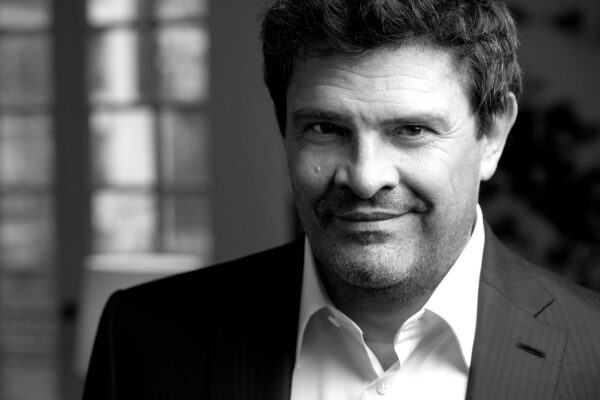Behind the "Made in Italy"
Stefania Lazzaroni is General Manager of the Altagamma Foundation, that represents, protects and promotes over 100 purely “Made in Italy” brands in multiple high-end sectors. Here, she discusses the challenges that Italy must overcome to foster growth and increase competitiveness in its network of cultural and creative companies – and how.
What does the “Made in Italy” label represent?
Stefania Lazzaroni: It is more than a label. It’s a way of doing business that brings together the values of Bello, Buono e Ben Fatto (good, beautiful, and well-made).
Yes, Made in Italy does refer to the Italian production of quality goods from fashion to food, design to hospitalit. But it also refers to aesthetic and manufacturing quality — the traditional cornerstone of Italian luxury – as well as “good”, which today includes the concepts of sustainability, inclusion and respect for others.Made in Italy has become a brand in its own right, emblematic of our country’s distinctive values and the impalpable “Italian style” – the richness of culture and art, historical and cultural heritage, the extraordinary ability to create beauty naturally without forcing anything, to commingle creative and manufacturing skills with continual innovation… This is the “soft power” Italy brings to the world.
What makes Italy a Luxury Capital?
Aside from “soft power,” Italy has important tangible attributes. Our high-end industry includes sector-leading companies that design and manufacture products such as textiles, furniture, footwear, jewelry, ceramics, boats, cars, wine… Each is the product of a different region. Almost all began as family businesses. Today, taken together, they power a diverse and far-reaching industry sector worth €115 billion, accounting for nearly 7% of GDP, employing more than half a million people. Aside from 2020, this sector has seen 30 years of steady revenue growth of 5 to 6% per year.
A key contributor to this performance is our ability to understand what our customers want. And these consumers are changing. Today’s international luxury consumers are younger, more digital, and more of them are Asian. They bring with them a new set of ennobling social values — such as respect for the environment and for other people – and they expect those same values will be exhibited by high-end Made in Italy products. Theirs is an important voice: we expect Gen Y and Z consumers to generate 180% of the industry’s growth over the next four years.
Finally, two key factors make Italy truly unique in the world of luxury. First, its unparalleled historical legacy celebrated around the world: the beauty of nature and of art from the Romans to the Renaissance to music and opera to today’s fashion designers; cultural traditions that embrace food and family, rich histories which created the basis for much of Western civilization. All this has fueled a strong aesthetic and cultural sensitivity combined with a solid heritage of craftsmanship often deeply rooted in the land.
And second, the country’s de-centralized industrial model based on regions of excellence and specialized production in regions throughout the country, which affords Italian companies the flexibility to design and produce in ways that best suit their business.
What are the challenges Italy must overcome to remain a leader in Luxury?
The first big challenge, is of course, the one everyone faces today: the Covid-19 pandemic. For luxury, the entire global industry has plummeted more than 20%, with specific sectors such as hospitality falling even more. But in fact, Covid-19 has essentially accelerated trends that were already on the horizon.
Two of these trends are also factors that will drive the recovery and secure the future if we handle this period intelligently: digital transformation and sustainability. They are our key challenges and they are also the core of the European Union’s NextGeneration recovery plan to help repair the economic and social damage caused by the coronavirus pandemic and lay the foundations for a modern and more sustainable Europe.
It’s clear that digital transformation is the key driver for future growth as it impacts product manufacturing, distribution and communication models. This vital, complex transformation requires a review of established organizational models and legislative frameworks. For example, while Italian industry is investing heavily in technology to integrate Artificial Intelligence into our business models, we also must invest in our human capital, which will involve employee reskilling and upskilling.
Indeed, talent training, especially in technical and professional skills, is approaching crisis proportions in Italy. Youth unemployment currently stand at 30%, yet there is a growing demand for skilled workers. The 2019 Altagamma-Skira labor survey (I Talenti del Fare- “The Production/Creative Talents) indicates that by 2023, the country will need 236,000 professional profiles across seven market segments — 44,000 in fashion alone. New technologies can make these jobs more interesting to today’s young people, and Altagamma is collaborating with the government to put companies in contact with local schools to provide high-level training for job-seekers.
In addition, embracing sustainability has become more important because of social change and the emerging values of the Gen Y and Z consumers. Historically, Italian companies have operated in a sustainable fashion, forging deep ties with their regions and supporting their employees and the communities in which they live and work. Yet only 35% of Altagamma companies currently publish a sustainability report in line with internationally recognized standards. This is a challenge to overcome if we are serious about showcasing our efforts in sustainability.
Finally, tourism — an incredible asset for the national economy, and for Luxury especially. Before the pandemic, non-Italian tourists accounted for 60% of luxury goods sales in Italy. Restoring the conditions for safe tourism is going to be an effort for all the EU member countries.
What has managerial control by French or international groups meant for Italian brands?
It has allowed Italian companies a way to secure their position as world leaders in the luxury sector. Many Italian high-end companies remain family-controlled, fiercely proud of their ancestral identities. And while this has a certain appeal, it can also make competing internationally difficult. That in turn compromises the ability to access capital, improve management processes and structures, execute retail expansion, and communicate effectively on a global scale.
In this regard, the examples of Italian brands controlled by French groups are largely positive. This is due to a combination of factors. First, the top managers of these groups have a comprehensive understanding of the luxury industry. Second, they ensure the independence of individual brands and are respectful of their heritage and the tangible and intangible assets that have been the cornerstones of success. By keeping production in Italy (thereby safeguarding the unique creative DNA of each brand) French groups protect the brands’ winning formula, while allowing the companies to evolve in terms of governance and market positioning. Balancing heritage, innovation, and sound business practices is the challenge that unites us.



